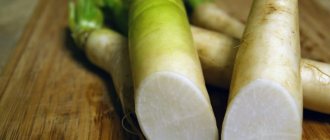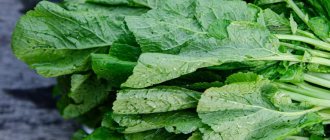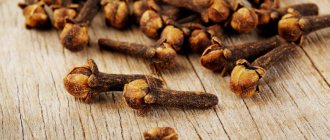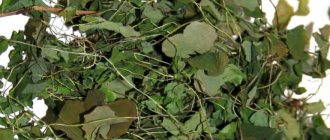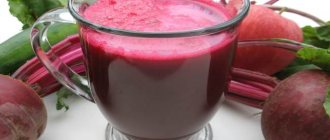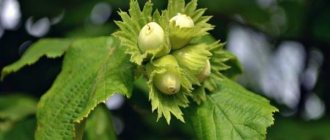What does the plant look like?
This plant is a small evergreen shrub or tree. Flowers can have different shades - green, purple, pale yellow. The tree itself reaches 15 m in height. Its trunk has a diameter of about 25 cm and is covered with white bark. Glossy leaves form bunches of 3-6 pieces.
The fruit of star anise is a capsule with seeds. Inside are fruits that look like a multi-rayed star. They predominantly include 8 infructescences. However, sometimes 7-12 occurs. The fruits are shaped like boats. As it ripens, the peel turns dark brown and acquires a tough consistency.
It is not recommended to eat the outer part of the shell. Each segment of the star has seeds. They should be ground to a powder. This spice tastes similar to bitter licorice.
What kind of spice is this
True star anise (star anise or Siberian) is the fruit of an evergreen tree growing in the southern regions of Asia (China, Indochina). In cooking, dried ripe fruits are used, both the seeds themselves and the husk; oil is obtained from the seeds. They are most widely used in Indian and Chinese cuisine.
The fruits of star anise are a woody, star-shaped multileaf with 7-8 rays (sometimes their number reaches 12). Each ray is a boat-like clove with a seed inside . The teeth are hard and brown. The spice is widely distributed in ground form. The powder is coarse-grained, the color varies from yellow-brown to red-burgundy. The taste is tart-bitter with sweet notes, the smell is reminiscent of anise. Another area of its application is traditional Chinese medicine.
This kind of star anise should not be confused with Japanese (anise). They are similar in appearance, but the latter has a strong unpleasant odor and tastes bitter. This species is toxic and causes severe poisoning.
However, true star anise also has a number of medical contraindications, so before adding it to food or drinks, you should consult your doctor.
Medicinal value of star anise
Star anise is a unique plant whose fruits have a healing effect on the body. The beneficial properties of the spice include the following:
- It has a pronounced carminative and diuretic effect. To achieve such results, take the spice before meals.
- Freshens breath. The Chinese often break off a piece of star with a seed and place it under the tongue.
- Treats viral infections and copes with cough. This effect is due to the content of shikimic acid in star anise. The composition helps the immune system cope with different strains of influenza.
- Has a stimulating effect.
- Normalizes the functioning of the reproductive organs.
- Copes with rheumatism and pain in the lower back.
- Increases the secretion of breast milk during feeding.
- Normalizes digestion, copes with flatulence, eliminates disturbances in the gastrointestinal tract.
Tea with star anise: beneficial properties of the drink
The fruits of the plant, which look like small stars, contain a huge amount of useful substances. Among them are manganese, copper, zinc, magnesium, phosphorus, iron, vitamins A, B1, B2, B3, B5, B6, B9, C, as well as tannin and essential oils. Tea made from star anise helps with the following diseases:
- Colds, flu, ARVI, bronchitis and other diseases of the upper respiratory tract. The drink eases the course of the disease, promotes the removal of sputum and cleanses the bronchi.
- Intestinal colic, flatulence, abdominal pain. The fruits of the plant have the ability to normalize intestinal function, relieve indigestion and soothe pain.
- “Women's diseases” - painful and irregular menstruation, cycle disorders due to taking potent medications.
We also recommend: Black cumin oil for oncology
The product will help restore the normal course of the cycle, relieve pain and improve overall well-being.
- Weakened immunity.
Regular consumption of the drink will improve the body's resistance to seasonal diseases and have a general strengthening effect. In addition, this remedy is recommended for nursing mothers. It enhances lactation and helps the body recover after childbirth. But people suffering from diseases of the nervous system should not get carried away with this drink. Also, people with allergies need to be careful, because taking the product can result in an exacerbation of the disease for them.
To understand the benefits and harms of oregano tea, read our article.
Application
Today, star anise has become widespread and is used to prepare various dishes. It is added to the following products:
- Confectionery. With the help of this spice it is possible to improve the taste of sweet pastries, jelly or puddings.
- Dough. Star anise gives it an amazing aroma.
- Jam. Thanks to this component, it will not become sugary.
- Various products. The spice helps to increase their shelf life.
- Meat dishes. The spice is also great for poultry dishes.
- Fresh juices.
- Beverages. Star anise is well suited for making tea, coffee, cocoa and other drinks. The spice can improve the taste of alcohol.
Contraindications
Eating star anise is strictly prohibited in the following cases:
- allergic reactions to the product - they can manifest themselves in the form of swelling, redness, rashes on the skin;
- plague and epilepsy;
- high nervous excitability;
- pregnancy.
Infusions based on star anise should be used with great caution when following a dietary diet. They can cause dehydration.
You should also be careful during lactation. The spice has a pronounced spicy taste and strong aroma. These qualities can be transferred to milk. As a result, the child may not like its taste. The spice can also cause allergies in infants.
Using star anise essential oil for external use causes burns. In its pure form, the product is strictly prohibited from being applied to the skin.
You should also use star anise infusions with caution when following a diet, so as not to become dehydrated. It is worth remembering that oil for external use can cause burns.
Contraindications for use and harm to the body
Like any food or medicine, star anise as a spice should be consumed in moderation. Uncontrolled, unlimited use of this seasoning when preparing various dishes can lead to unpleasant consequences. Particular caution should be exercised by people prone to allergic reactions, as star anise can cause swelling, rashes, and skin irritation. Essential oil in undiluted form can even cause burns.
There are certain groups of people who should absolutely not use this spice:
- Consuming the spice in the early stages of pregnancy can cause miscarriage.
- Due to increased body tone, insomnia and depression occur.
- Children under twelve years of age should only be given minimal doses of spice.
- Epileptics should absolutely not consume drinks and dishes with this seasoning.
The following contraindications to the use of seasoning can be identified:
- increased nervous excitability;
- allergic intolerance to plant components;
- bronchial asthma;
- psychiatric disorders.
Star anise is often included in fitness teas for weight loss. The combination of the fruits of this plant with the leaves of dill and lingonberry leads to the removal of excess water from the body. These drinks should be consumed with clean drinking water. In case of immune disorders, pathologies of the heart and blood vessels, the seeds of this plant can cause heartburn, nausea, rapid heartbeat and increased blood pressure.
Side effects
Eating too much of the spice may cause severe vomiting. Star anise also provokes increased nervous excitement.
Chemical properties of some components of star anise
Star anise and its essential oil contain many valuable compounds that bring great benefits to the body. Thanks to this, the product is used in cosmetology, strengthens the immune system, treats the respiratory system, copes with fungal pathologies and normalizes sleep. The beneficial properties of the product are due to its unique composition.
Anethole
This is an aromatic ester, which consists of 2 isomers - trans- and cis-anethole. The first ingredient gives the product a sweet aroma. Anethole has an antimicrobial effect, copes with fungal infections, and has an insecticidal effect.
The structure of anethole resembles catecholamines. This class includes the hormones adrenaline and norepinephrine. They also include the neurotransmitter dopamine.
Quercetin
This flavonoid has strong antioxidant activity. It is a useful element that helps cope with signs of allergies and infectious pathologies. The antioxidant properties of quercetin reliably protect against ultraviolet radiation.
Limonene
This is a monoterpene that can relieve inflammation and have an antibacterial effect. Limonene also stimulates wound healing. The product also has pronounced antioxidant activity and helps prevent damage from oxidative processes.
Linalool
The product helps cope with symptoms of stress and increased anxiety. It activates the synthesis of vitamin E, which is of great benefit to the skin and has a pronounced antioxidant effect. Thanks to the use of spices, it is possible to make the skin stronger and reduce the number of wrinkles.
Alpha-pinene
It is a terpene that has effects on communication between the brain and body. Alpha-pinene protects neurotransmitters from enzymes that attack them. Therefore, preparations based on star anise are planned to be used for the treatment of dementia and other brain pathologies.
Alpha-pinene also has an anti-stress effect. It interacts with the same neurotransmitters as other artificial stress relievers.
Beta-pinene
This is another terpene that has effects on neurotransmitters. This substance affects those substances that are responsible for controlling mood. The product also has an antioxidant effect and reduces the amount of toxic substances in the body.
Nerolidol
This terpene has a sedative effect. Therefore, star anise is an excellent natural remedy for stress factors. He successfully copes with anxiety and bad mood. This component helps suppress the growth of fungal microorganisms and bacteria.
Terpinen-4-ol
This is a known substance that is present in large quantities in tea tree oil. The product inhibits the development of different strains of bacteria. It is especially effective against propionibacteria acne.
Star anise and star anise: what's the difference?
Star anise and star anise are the same thing. The fruits of this plant are actively used in cooking and medical practice. They have useful characteristics and have certain contraindications.
Star anise is a type of anise that has a rich and tart taste. The plant is found in Southeast Asia. It grows in southwest China and also in Indochina.
Star anise is called star anise due to the characteristic shape of the fruit. It is a dark brown multi-leaflet with 6, 7 or 8 ends. It is shaped like a star. Each of its rays contains 1 seed.
How and where do two completely different spices grow - anise and star anise?
The differences between these representatives of the plant kingdom lie in their belonging to different botanical species. Star anise is an evergreen shrub native to Southeast Asia. Currently, it is cultivated in Japan, Southeast China, India, Vietnam and other countries.
It can also grow as a tree with an erect trunk and reach a height of 6 to 10 meters. The fruits ripen on its fragile, easily broken branches already in the fifth year of growth. However, star anise seeds become suitable for human consumption only from trees that have reached 15 years of age. The fruiting period lasts up to 100 years. Star anise is harvested in the fall. Europe was first introduced to the bittersweet taste of Chinese seasoning in the 16th century. Unlike the oriental spice, common anise (sweet cumin or aniseed thigh - its other names) is an annual herbaceous plant belonging to the Umbelliferae family. It, like fennel or dill, grows to a height of up to 0.7 m. Its wide distribution area is the CIS countries, Africa, America and Europe.
The smells of star anise and anise (gourmets and perfumers can tell you what the difference is) are really similar to each other. Therefore, when the oriental spice became available in Europe and Russia, people dubbed it “anise.”
Is star anise safe during pregnancy?
It is not recommended to use the spice during pregnancy. Today there is no exact data regarding its harmlessness for the unborn baby.
Doctors give a similar warning to nursing mothers. Some followers of Chinese medicine claim that the spice helps enhance lactation. There is evidence that star anise can stimulate milk production.
However, the baby receives from milk all the components that a nursing mother consumes. For young children, star anise poses a serious danger. Considering such risks, it is better to avoid the spice during pregnancy and lactation.
Medicinal use
Star anise and anise have become a real find in folk medicine, and in this area there is no difference between them. Each culture is a strong antiseptic and is used in treatment as an anti-inflammatory and tonic.
- Spices help treat colds and infectious diseases. In the stage of severe cough, they act excellently as a sedative and expectorant.
- Both star anise and anise tidy up the digestive system, relieve bloating, colic, cramps and even constipation.
- For children, spices are used as sedatives (if necessary to improve sleep).
Simply adding seasonings to food can have a positive effect on the body and create a healing effect. If there is a need to use these spices as medicines, it is very important to maintain accurate dosages. It is better not to abuse infusions, decoctions and oils from these plant crops.
How is star anise essential oil used?
The essential oil of this product is used as an aroma component in evaporators and diffusers. It is also often applied locally to eliminate many pathologies.
The product combines well with the following components:
- essential oils of citrus fruits - you can use lime, lemon, grapefruit, tangerine;
- essential oils of flowers – roses, neroli;
- herbs – German chamomile or mint would be an excellent option;
- spicy oils - these include coriander, black pepper, vanilla;
- essential oils of tea tree, cypress or cedar.
Star anise essential oil has an antibacterial effect. The product helps to cope with 70 strains of bacteria that are resistant to drugs.
There are scientific studies that indicate that shikimic acid, which is part of the spice, strengthens the immune system. Thanks to this, the body becomes more resistant to viruses and bacteria.
The essential oil of the spice helps cope with the fungal microorganism Candida albicans. It affects the dermis, mouth and throat. The product also copes with increased anxiety and tension. It normalizes sleep and eliminates pain in joints and muscle tissue.
Star anise has insecticidal properties. Its essential oil is used to apply to the skin to prevent mosquito bites. To do this, it is recommended to mix the product with vegetable oil and treat the body.
Massage oil is also highly effective. In addition, the product is often added to room diffusers or a warm bath. This helps cope with anxiety and stress.
How to brew star anise into tea?
There is a misconception that the fruits of this plant need to be boiled to prepare the drink. We hasten to refute it. The seed cups of the plant are quite delicate and do not require prolonged exposure to high temperatures to fully develop their taste and wonderful aroma.
It will be enough to brew them with boiling water and wait from one to three minutes, depending on how rich you like your tea. You should also not brew more than two stars per cup of drink, so as not to make it unfit for consumption. Read about how to brew lemon balm into tea in our other article.
Spice star anise
To make this spice, it is recommended to follow these steps:
- collect unripe fruits;
- Dry thoroughly in the sun until the fruits turn red-brown;
- chop well.
The ground spice is a brown, coarse-grained powder with a reddish tint. You can also use whole star anise. They are used for medicinal purposes or for making drinks and marinades.
This spice is used to decorate desserts. The spice is often used in the confectionery industry. It is often added to dough for a wonderful aroma.
Star anise in cooking
The spice has a distinct aroma that is reminiscent of licorice, but much stronger than regular anise. Star anise tastes like bitter anise. However, it is more spicy.
Star anise is often used in Chinese cuisine. It is used for cooking meat. The spice is also used in certain recipes in Vietnam and Malaysia.
The spice can be added to alcoholic and non-alcoholic drinks. It is often used as an inexpensive substitute for anise seeds, adding to compotes, baked goods, and jams. To replace anise, you should follow this ratio: 1 crushed star anise equals half a small spoon of anise seeds.
The unique aroma of the spice allows it to be used to prepare unusual fish dishes. Star anise is used as a seasoning for lamb and beef. It also helps enhance the flavor of duck, pear, and poultry. The spice is added to dishes made from pork, pumpkin, and shrimp. The spice goes well with soups.
It is recommended to store the spice in an airtight container. This should be done in a cool and dark place that is not affected by heat and moisture. In such conditions, the spice can be stored for at least 1 year.
Carrot soup with star anise
To make this soup, you need to pour a little vegetable oil into a pan and add onion, thyme, bay leaf, garlic and star anise seeds. Fry ingredients for 5 minutes until soft.
Then add 500 g of chopped carrots and 500 ml of broth. Cook the mixture until the root vegetables are soft - this will take about half an hour. Then remove the thyme, bay leaf and star anise. Puree the soup using a blender to obtain a puree consistency. Add salt and pepper. Cool slightly, cover and cool slightly.
Before serving, heat the soup slightly and grind the star anise in a coffee grinder. Pour the dish into plates and sprinkle with spices.
Meat dishes with star anise
The spice goes well with meat dishes. It can be combined with different types of meat and fish. Thanks to this, the products become more juicy and piquant. It is recommended to use 1 gram of spice for 1 serving.
Today, star anise is often added to barbecue marinades. This allows you to get aromatic and very tender meat.
To achieve a good effect, you need to choose the right spice. It is best to purchase whole star anise and make powder from them. This will help preserve maximum benefits and aroma. It is best to use a chocolate-colored spice with shiny seeds.
The use of star anise in cooking
The fruits of the plant are characterized by a sweetish mild taste that resembles anise. At the same time, the spice enriches not only desserts (mousses, jams, marmalades, muffins), but also meat and fish dishes. In cooking, star anise is used both as whole stars and as powder from ground seeds. Vanilla or cinnamon goes well with this spice. For example, it is precisely these spices that give the rich taste and aroma of various types of mulled wine. Whole stars are added to some types of tea and liqueurs. In addition, garlic, onion, cloves, and ginger reveal the qualities of seasonings.
The advantage of this spice for cooking is that all the richness of taste and smell is revealed precisely under prolonged exposure to high temperatures. This seasoning can be added at any stage of preparing various dishes. When roasting meat in the oven, star anise gives the dish a special tenderness, softness and unique aroma.
In accordance with national traditions, this spice is used in different ways:
- In northern Vietnam, it is used to improve the taste of beef soups.
- In Thailand, it is an integral part of iced milk tea.
- Indonesia is famous for its unusually tasty sauces for meat dishes, to which this seasoning is added.
Aniseed alcoholic drinks, in which star anise is used due to its lower cost, have become especially popular. This alcohol has become widespread in Mediterranean countries.
Drink Recipes
Star anise goes well with alcoholic and non-alcoholic drinks. Today you can find many interesting recipes with this spice.
Tea with star anise
To make such a drink, you should use whole spice stars or spice in powder form. Crushed anise gives off a good taste and smell, and whole fruits help give the dish an interesting appearance.
Since the spice contains many valuable components, adding it to tea helps make the drink healing.
To prepare a drink with star anise, you need to pour boiling water over black tea. Then add star anise, cloves and cinnamon. You can also add a little lemon and orange to the drink. When the water has cooled slightly, you can add honey.
You can also make a delicious and aromatic drink - oriental tea. For this, in addition to star anise, you will need cinnamon, caramel syrup and lemon.
Coffee with star anise
Star anise goes great with coffee. To prepare a tasty and aromatic drink, the spice is mixed with cardamom and cinnamon.
To do this, use a coffee grinder to grind 2 small spoons of coffee, 1 star anise and 4 cardamom boxes. You can also add half a small spoon of cinnamon.
Place the resulting mass in a pot and pour boiling water over it. Cover with a lid and leave to brew for a while. Then add sugar and cook over low heat. When the foam rises, turn off the heat and strain the mixture through a sieve.
Star anise tincture
There are many recipes for making this drink. Vodka tincture is especially popular. To do this, 10 g of seasoning should be mixed with 100 g of vodka. After 3 weeks, strain, then the drink can be consumed.
Moonshine with star anise
This drink is easy to prepare. To do this, star anise is mixed with moonshine. For 1 kg of spice you will need 5 liters of liquid. A good option would be coarsely crushed star anise. You need to infuse the product for 3 days. Then add another 6.5 liters of moonshine and distill.
What can you replace star anise with?
In terms of purpose, star anise is similar to caraway seeds, cinnamon or anise. Despite the second name of the spice - star anise, these are different spices. True anise is used as an alternative to star anise due to its similar aroma. Cinnamon and cumin are similar to the spice in smell and sweet taste.
Star anise is often used to flavor compotes and jelly. Also, spice is often added to jam, as it improves the taste, helps preserve the natural color and increases shelf life.
To replace star anise in drinks and jam, you can use cinnamon or anise. However, they do not have all the organoleptic properties that can be obtained by using star anise.
2.How to grow star anise at home
2.1.Care
Trim star anise stems after flowering to create a neat, compact shape. Carry out pruning with a sharply sharpened and sterilized pruner or garden knife.
↑ Up,
2.2.Reproduction
Plants are propagated by apical cuttings or seeds , as well as root suckers . Only freshly harvested seeds come out well.
↑ Up,
2.3.Temperature
In spring and summer, normal room temperature is suitable, but during the cold season it is better to place star anise in a cooler room with a temperature of 6 - 10 ° C.
↑ Up,
2.4.Lighting
Prefers partial shade . Plants grown in the shade have beautiful dark green leaves, while illiciums placed in the sun take on a yellowish green color. Direct sun is only permissible if the soil moisture increases.
↑ Up,
2.5.Soil
This shrub prefers sandy soils with an acidic pH , but easily adapts to any type of soil.
↑ Up,
2.6.Fertilizer
Fertilize 2 times a month in spring and summer - when the plant is actively developing. In autumn and winter, feeding is stopped.
↑ Up,
2.7.Flowering time
From March to May.
↑ Up,
2.8.Spraying
Spray when the indoor air becomes too dry, for example when the heating is on.
↑ Up,
2.9.Watering
Keep the soil evenly moist in spring and summer, always water star anise until the earthen ball is completely soaked. In the autumn-winter period, reduce watering. Do not use hard water for irrigation.
↑ Up,
2.10.Transfer
In spring, annually . For large specimens, simply replace the top layer of soil with a fresh one.
↑ Up,
2.11.Pests and diseases
Rare.
↑ Up,
2.12.Purpose
Star anise is grown for its attractive, fragrant leaves and flowers.
↑ Up,
2.13.Note
Essential oils obtained from star anise leaves are used in folk medicine. The leaves are added as seasonings to various dishes and drinks. Remember that the leaves and fruits of some species are toxic .
↑ Up,
Hydroponics.
Growing and basic care
Under natural conditions, star anise grows in warm, humid climates. The plant prefers fertile soil. It should be light and non-acidic. The crop is not recommended to be planted in loamy or waterlogged soil.
To grow star anise, do the following:
- plant the seeds in a tub or pot and wait for germination - this must be done in a heated room;
- then transfer the seedling to open ground.
When growing spices, you should follow these rules:
- The site for the plant must be prepared in advance. This is recommended to be done in the fall. To do this, the soil needs to be dug to a depth of 20-25 cm, cleared of weeds and fed with manure or compost.
- In the spring, before planting, dig up the bed 5-6 cm. It needs to be leveled and compacted.
- It is recommended to plant the plant in April. The soil temperature should be 3-4 degrees.
It is recommended to soak the planting material in water for 3 days. Then plant in warm soil. It is recommended to constantly loosen the soil. In dry weather, the shrub needs abundant watering. The plant should be fed with nitrogen agents.
